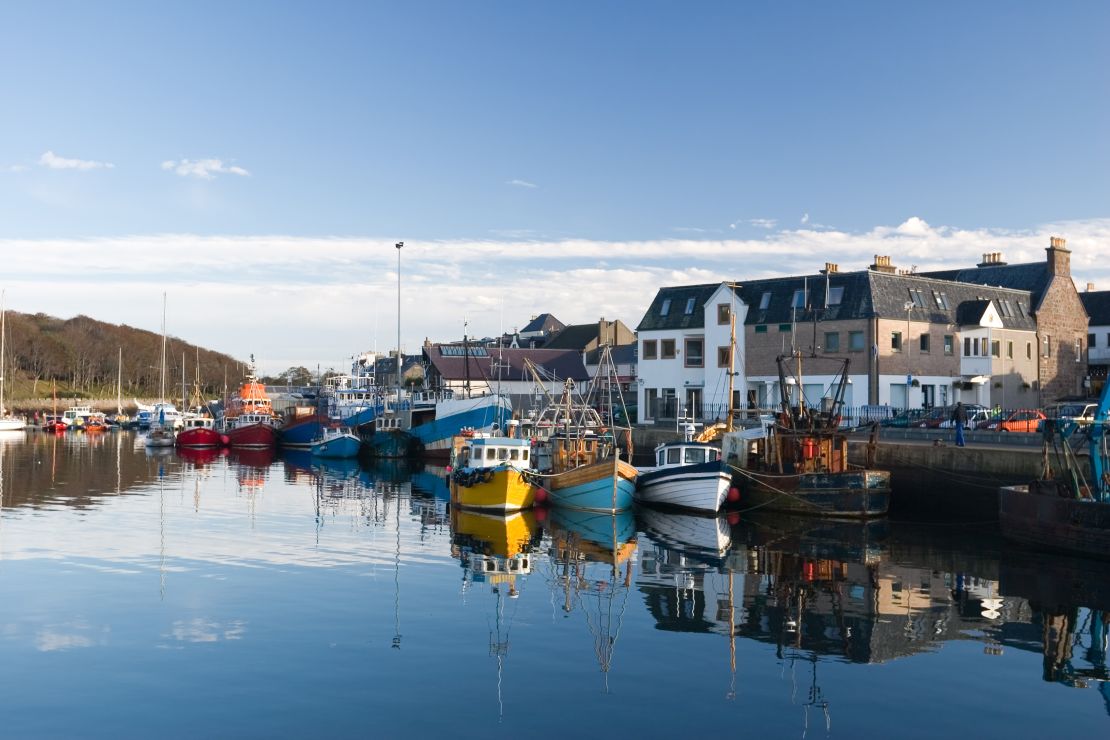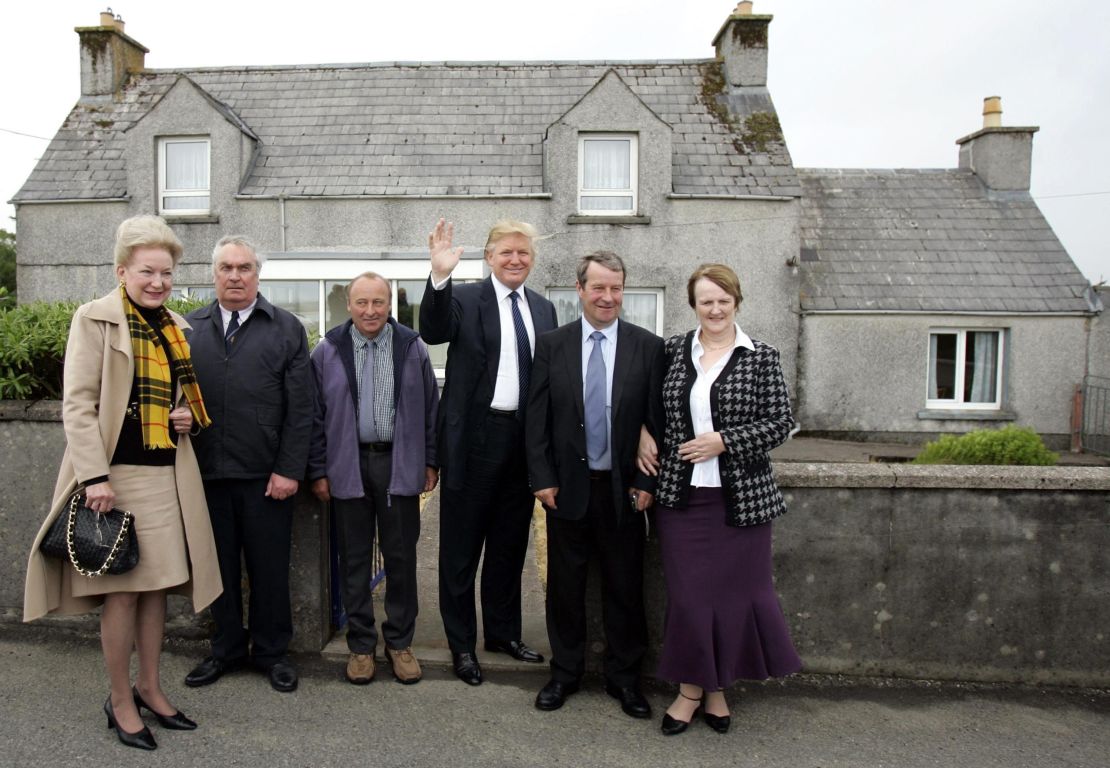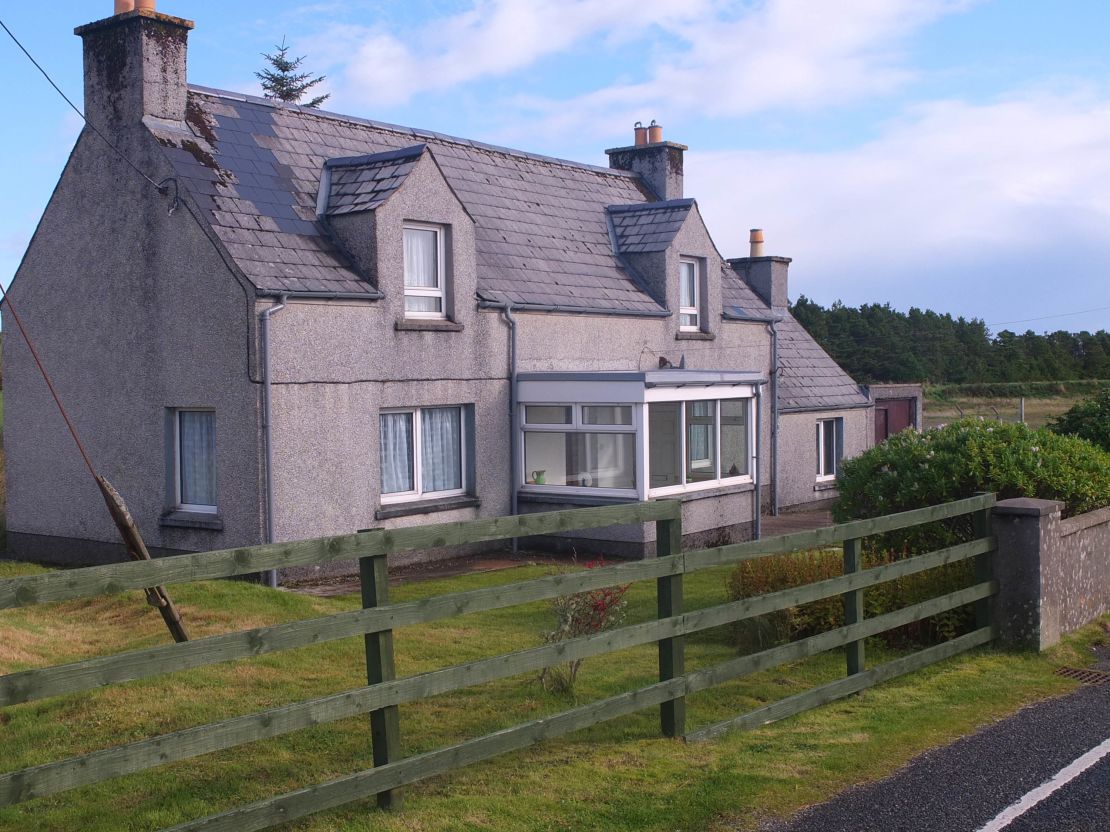It may surprise many to learn that Donald Trump, having campaigned so fiercely on the issue of curbing immigration, is himself the son of an economic migrant.
Half of Donald Trump’s DNA is Scottish. His late mother, Mary Anne MacLeod, was born and raised on the remote and beautiful Scottish Isle of Lewis, before leaving as a 17-year-old for the United States to work as a domestic servant in 1930.
CNN traveled to the far-flung island to trace Trump’s roots, how his mother’s origins may have shaped the presidential candidate, and how he is viewed there today.
No strong affinity
The Isle of Lewis lies at Britain’s most northwesterly edge, as far from Scotland’s capital Edinburgh as Edinburgh is from London.
The weather is often harsh and unrelenting; the wind whips your ears constantly. All that lies between the island and America are 3,000 miles of churning Atlantic waves.
Amid a trove of birth, death and marriage certificates, local genealogist Bill Lawson talks us through Trump’s family tree, which yields surprisingly tangible links to the US businessman-turned-politician.
“Donald” is a name that repeatedly appears in the family and one ancestor was known as “Red John” for the distinctive-colored locks that were passed down to Trump.
But for all these superficial connections, there is no strong affinity between the island and its residents and the divisive candidate today.

‘No interest in island roots’
At his mother’s former home, now home to his relatives, there is no hint of support for his presidential bid, no signs celebrating a son of the isle made good.
The relatives who still live here aren’t interested in speaking to CNN or other media outlets about their cousin, who once made a fleeting visit here, on his only trip as an adult to the island.

“There is a strong perception in the islands that Donald has no interest whatsoever in his island roots,” says Malcolm Maclean, an arts and heritage consultant on Lewis.
The property mogul has only ever come to the island twice – once as a 10-year-old, and again, on a brief side-visit during a business trip to Scotland in 2008. While he has played up his Scottish heritage, most locals feel he has little in common with them.
For them, he is the antithesis of Lewis’s collective history.
Related: In the shadow of Trump’s wall
Trump’s ancestors suffered in “The Clearances” – a tragic, decades-long period of upheaval in Scotland, during which greedy landlords forced families from their homes.
Two branches of Trump’s family were forced from their homes in this way, becoming refugees in their own country – the Macauleys forced from their homes in the west of the isle, the Smiths further south.
You might expect some of that traumatic family history, a defining experience for Trump’s ancestors, to have embedded itself into his outlook. But with Trump, who has railed against the notion of the US accepting refugees, that does not appear to be the case.
“Donald has shown no evidence whatsoever of any interest, or even awareness of that background,” says Maclean.
The distrust of property barons and the fear of losing one’s home runs deep on the island, permeating the residents’ collective conscience. “I think people to this day in the Highlands and islands have a deeply skeptical attitude to landlordism,” says Maclean. “It has a very negative history in this part of the world.”
Yet today, Trump lives by the very trade that saw his family and hundreds of thousands of other Scots uprooted, thrown from their humble homes often with just the clothes on their backs, forced to start over. Trump could not have turned his back on those roots more if he had tried.
Related: Melania Trump’s American Dream
Trump’s maternal family tree
Trump’s mother, Mary Anne Macleod, was the product of generations of fisherman and farmers. She was born on Lewis in 1912, the youngest of 10 children.
They lived in a thatched-roof, one-room cottage known as a “black house” on a croft – a small agricultural landholding.
Life in the tiny one-street village of Tong – a few miles from Stornoway Harbor, at the time the only link to the outside world – was precarious.
In a good year they had just enough; in a bad year, life was even harder.
“A small, narrow croft could feed one family of children, but if they wanted to get married and have children, where are they going to go?” explains Lawson. “They had to go somewhere.”
So in 1930, aged 18, Mary Anne set out for the US to find a job in domestic service, as a number of her elder sisters had done.
Due to the legacy of the clearances, says Maclean, “there was a whole generation looking for a new life.”
“She was categorically an economic migrant, her whole generation were,” he says.
While many who left typically planned to earn money for a few years before returning home, the realities of crofting made that difficult, explains Lawson.
“It wasn’t that easy to come home. There was nowhere to come home to in most cases as somebody else was in the house with the croft,” he says.
In Mary Anne’s case, she never moved home. Six years after leaving for America she married Fred Trump, a real estate developer whose livelihood didn’t go over well with some on the island.
Trump’s island traits
In his 2015 book “Great Again: How to Fix Our Crippled America,” Trump suggests his Lewis roots are strong. He says he “got religion” from his mother, whose faith was founded in her upbringing on the island.
Mary Anne “would certainly have come from a strong religious background,” says Rev. James McIver of the Free Church of Scotland. “The church was very foundational and central to the community.”
But, he says, the gambling businesses that form a significant part of Trump’s business empire would not gain the approval of many of the island’s faithful today. “I would say his lifestyle nowadays would be regarded here today in those respects as an immoral one.”
But perhaps there are some traces of Trump’s Lewis roots to be found in the island’s most famous son.
The Protestant work ethic, says Maclean, would have been a formative influence on Trump’s mother. “She would be very accustomed to hard work,” he says. “Crofting, at that time in particular, was subsistence farming.”
Related: Confessions from the campaign trail
A far cry from Trump’s business activities, certainly, but even his staunchest detractors could not deny the businessman’s work ethic.
And perhaps there’s another legacy of his mother’s island upbringing.

Local man Derick Mackenzie set up the Facebook support page “Isle of Lewis supports Trump for President.” (While Lewis has a population of 18,500, the site has mustered only 127 “likes.”)
He sees something very relatable – and admirable – in the man running for president.
“There is an expression you hear: ‘Lewis straight talking’,” says Mackenzie. “It’s a kind of honesty… This kind of not being concerned with what people think. They will give it to you between the eyes.”
Perhaps Trump owes more to the island than just the hair.
Video by Alex Platt, Lewis Whyld and Woj Treszczynski

